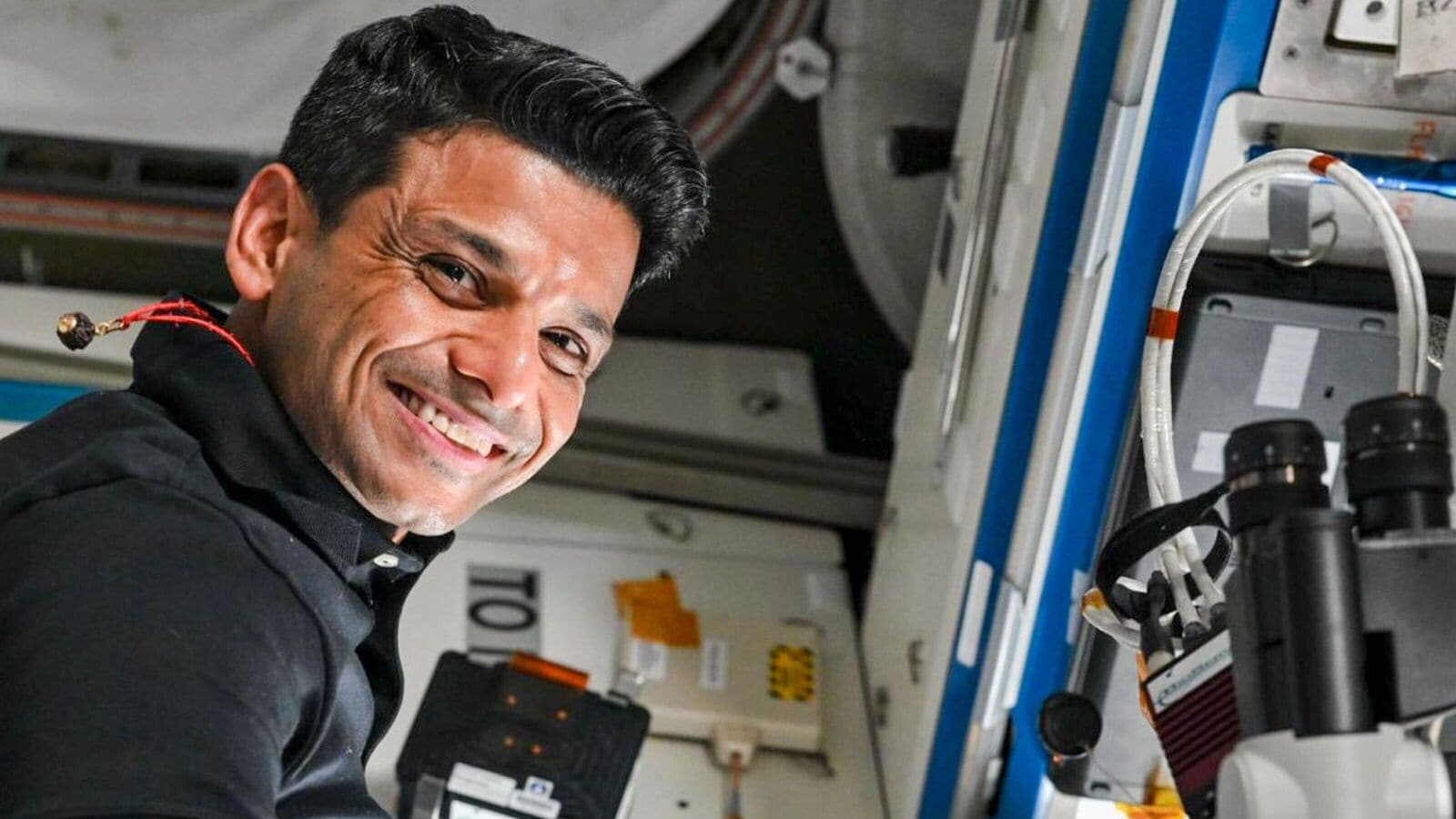Science
ISRO Astronaut Shubhanshu Shukla Shares Microgravity Experience

Indian Space Research Organisation (ISRO) astronaut Shubhanshu Shukla has provided a glimpse into his recent experience aboard the International Space Station (ISS). In a video posted on social media, Shukla attempts to illustrate the challenge of remaining still in microgravity, a task that proved more difficult than he anticipated.
The footage, which was recorded shortly after his arrival at the ISS, shows Shukla floating in space. He candidly remarked on his struggle to maintain stillness, saying, “Apparently being still is a challenge with or without gravity.” The video highlights his early days on the space station, where he was still learning to navigate his surroundings.
Shukla, who made history as India’s first astronaut to conduct research on the ISS, described the experience of achieving stillness in space as akin to finding mental calm in an increasingly fast-paced world. He stated, “Any small disturbance can move your body in space and it takes skill to be completely still. Kind of like our minds in this fast-moving world. Take some time to be still today. It is important to sometimes slow down to be fast.”
Mission Highlights and Return to Earth
Shukla’s mission with the Axiom-4 team concluded with a successful return to Earth on June 15, 2023. The Dragon Grace spacecraft, carrying Shukla and three fellow astronauts, splashed down off the coast of San Diego, California. This mission marked a significant milestone for India, with Shukla becoming the second Indian to venture into space, following the legendary Rakesh Sharma.
Currently, Shukla is in Houston, where he is reuniting with his family. His wife, Kamna, and their six-year-old son, Kiash, have already arrived in the city. Following the mission, an official statement from Union Minister Jitendra Singh confirmed that Shukla and his colleagues will remain in quarantine until July 23, 2023, to complete necessary medical and re-adaptation procedures.
During the 20-day mission, Shukla spent a substantial 18 days aboard the ISS, conducting various microgravity experiments developed by both ISRO and NASA. The astronauts orbited Earth approximately 320 times and traveled over 1.35 million kilometers during their time in space.
Shukla’s experiences not only highlight the remarkable achievements of ISRO but also serve as a reminder of the personal and scientific endeavors that define space exploration. His reflections on stillness may resonate with many, encouraging a pause in the hustle of daily life.
-

 World4 months ago
World4 months agoSBI Announces QIP Floor Price at ₹811.05 Per Share
-

 Lifestyle4 months ago
Lifestyle4 months agoCept Unveils ₹3.1 Crore Urban Mobility Plan for Sustainable Growth
-

 Science3 months ago
Science3 months agoNew Blood Group Discovered in South Indian Woman at Rotary Centre
-

 World4 months ago
World4 months agoTorrential Rains Cause Flash Flooding in New York and New Jersey
-

 Sports3 months ago
Sports3 months agoBroad Advocates for Bowling Change Ahead of Final Test Against India
-

 Top Stories4 months ago
Top Stories4 months agoKonkani Cultural Organisation to Host Pearl Jubilee in Abu Dhabi
-

 Science4 months ago
Science4 months agoNothing Headphone 1 Review: A Bold Contender in Audio Design
-

 Top Stories4 months ago
Top Stories4 months agoAir India Crash Investigation Highlights Boeing Fuel Switch Concerns
-

 Sports3 months ago
Sports3 months agoCristian Totti Retires at 19: Pressure of Fame Takes Toll
-

 Business4 months ago
Business4 months agoIndian Stock Market Rebounds: Sensex and Nifty Rise After Four-Day Decline
-

 Politics4 months ago
Politics4 months agoAbandoned Doberman Finds New Home After Journey to Prague
-

 Top Stories4 months ago
Top Stories4 months agoPatna Bank Manager Abhishek Varun Found Dead in Well









